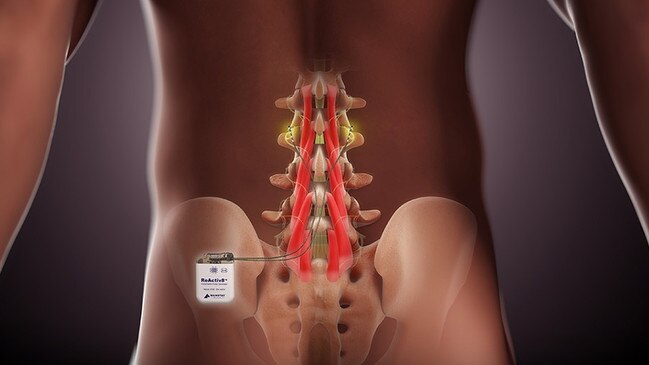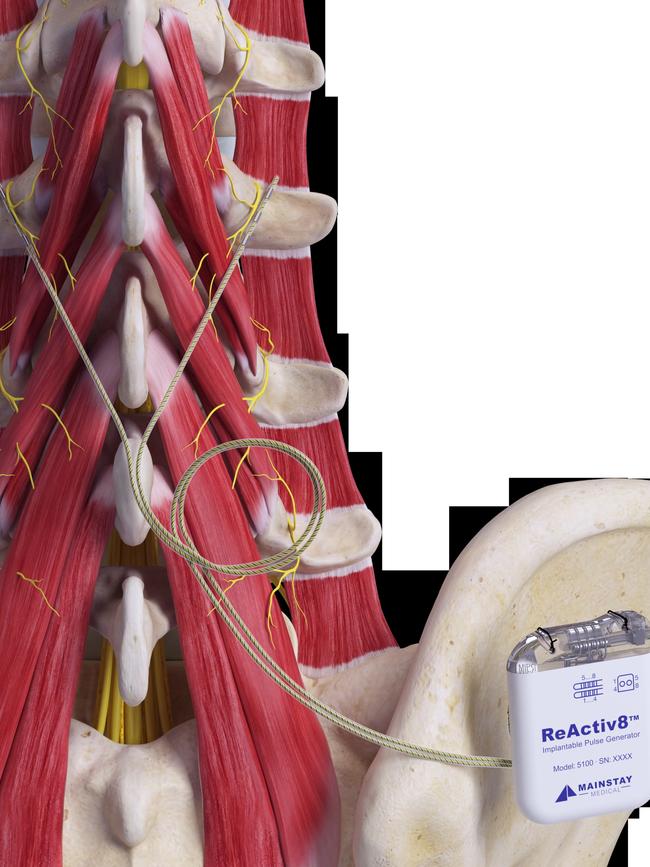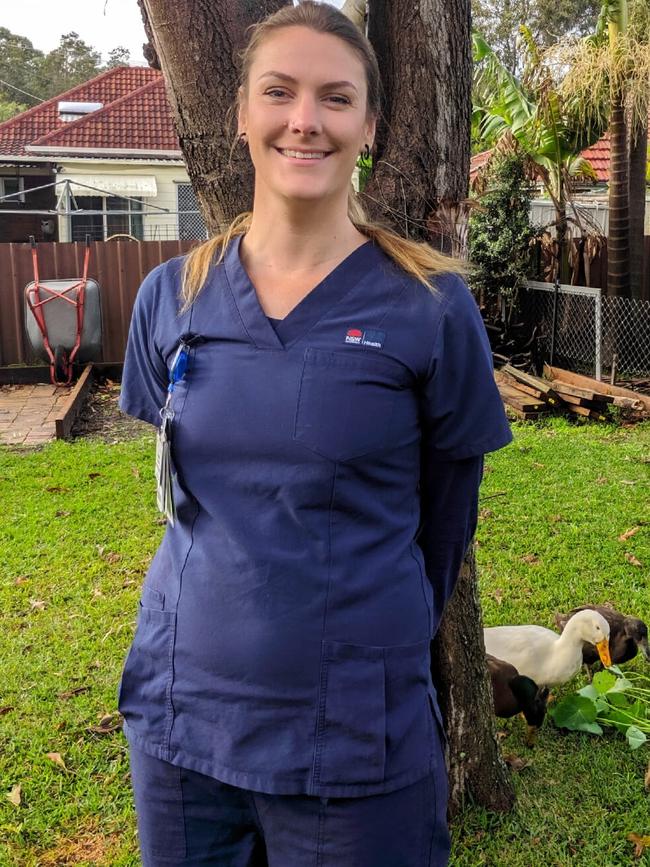Implantable device offers hope to chronic back pain sufferers
A new device targeting back pain will become more accessible, with private health patients able to claim the product. More than 60 per cent of people who trialled the device reported significant pain reduction.
NSW
Don't miss out on the headlines from NSW. Followed categories will be added to My News.
- Revealed: Wait time to clear 290k elective surgeries
- All NSW hospitals’ elective surgery wait times revealed
A new device may offer hope to thousands of people with chronic lower back pain.
After being surgically implanted, using it for just 30 minutes in the morning and again in the evening is reported to have a dramatic effect on back pain.
The device, called ReActiv8, has been approved for inclusion on the Prostheses List of reimbursed products in Australia, meaning it is claimable for private health patients as of July 1.
Dr Marc Russo, Director of Hunter Pain Clinic and Genesis Research Services, was lead researcher on one of two Australian clinical trials, which included a double blind study.
“For 90 days, half did not have their device turned on, and half was turned on, that way you can truly find out the results,” Dr Russo said.
“The people who got the real therapy got dramatically better in improvement in their pain control and quality of life.”

Unlike the old transcutaneous electrical nerve stimulation or TENS machines, which externally contract muscles, this device works by electrically stimulating the nerves.
This in turn contracts the multifidous muscles, which stabilise the lower spine. Activation of these muscles has been shown to facilitate recovery from chronic lower back pain.
“Unlike traditional pain management approaches that focus on temporarily alleviating pain, ReActiv8 is designed to help restore proper functioning of the key stabilising muscles of the lower back,” Dr Russo said.
“This is about restoring the back to how it used to be.
MORE FROM JANE HANSEN:
Pete Evans’ vaccine conspiracies debunked
Irony of being a heavily-tattooed anti-vaxxer
“You lie down in the morning and turn on the device, you have a battery under the skin, under the love handle. It will contact the muscle for 30 minutes on and off and the same thing in the evening.
“It gives you a very specific Jane Fonda workout of this muscle, so it aims to bring the muscle back online again to support the spine.
“It strengthens the multifidous, retrains the multifidous and, once that is complete, you don’t necessarily need the device on an ongoing basis.
“As long as you maintain exercise and intermittent use of the device you can carry on and your pain is not going to come back.”


More than 60 per cent of trial subjects reported significant pain reduction.
Newcastle nurse Rachael Henebery took part in the trial two years ago. The 29-year-old had suffered chronic back pain from a wakeboard injury.
“I have degenerative disc disease and I was depressed and couldn’t do everything I wanted to,” she said.
“It affected work, there were days where I’d come home in agony. I was desperate.
“It is a little device that sits in the back of your hip and has two little wires that make your muscles clench and activate the muscles and strengthens the muscles. It took four to five months but I’ve had 80 to 90 per cent improvement.
“Before I’d bend over to pick up a washing basket and throw my back out and be two to three days in agony and not be able to do normal things.
“But after a few months I would not get the flare-ups. And work — I haven’t had a day off for a year.”
Dr Russo said: “These are being placed in people who have lost the capacity to work, taking three or four drugs including narcotics and seeing physios, chiros, doctors, MRI scans and so on.
“The average chronic pain patients in terms of direct and indirect costs goes through about $11,000 a year. Having chronic pain is expensive to society.”
